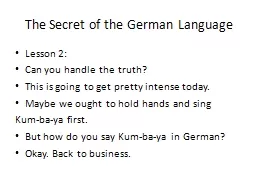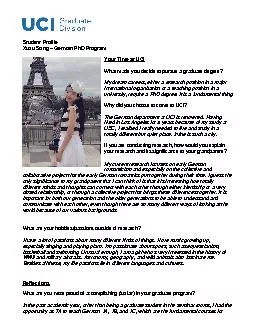PPT-The Secret of the German Language
Author : alexa-scheidler | Published Date : 2018-11-07
Lesson 2 Can you handle the truth This is going to get pretty intense today Maybe we ought to hold hands and sing Kumbaya first But how do you say Kumbaya in German
Presentation Embed Code
Download Presentation
Download Presentation The PPT/PDF document "The Secret of the German Language" is the property of its rightful owner. Permission is granted to download and print the materials on this website for personal, non-commercial use only, and to display it on your personal computer provided you do not modify the materials and that you retain all copyright notices contained in the materials. By downloading content from our website, you accept the terms of this agreement.
The Secret of the German Language: Transcript
Download Rules Of Document
"The Secret of the German Language"The content belongs to its owner. You may download and print it for personal use, without modification, and keep all copyright notices. By downloading, you agree to these terms.
Related Documents














